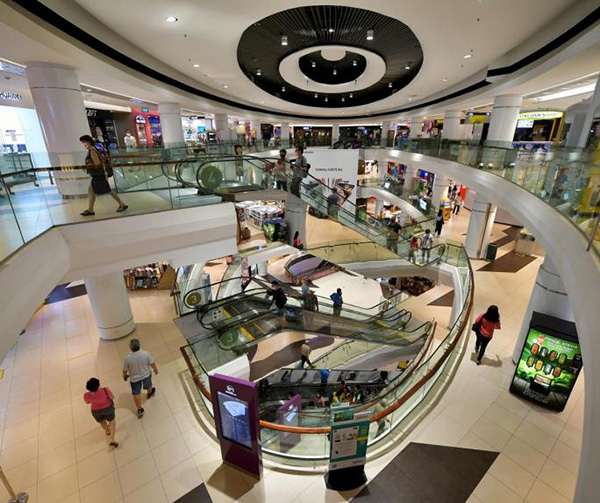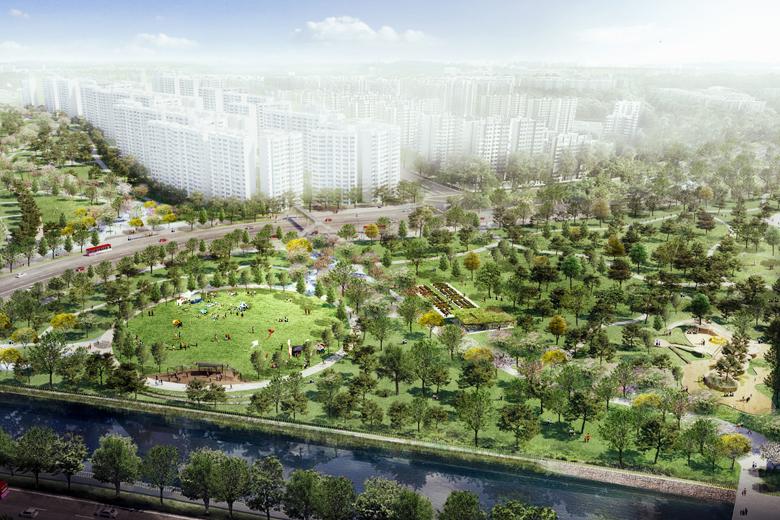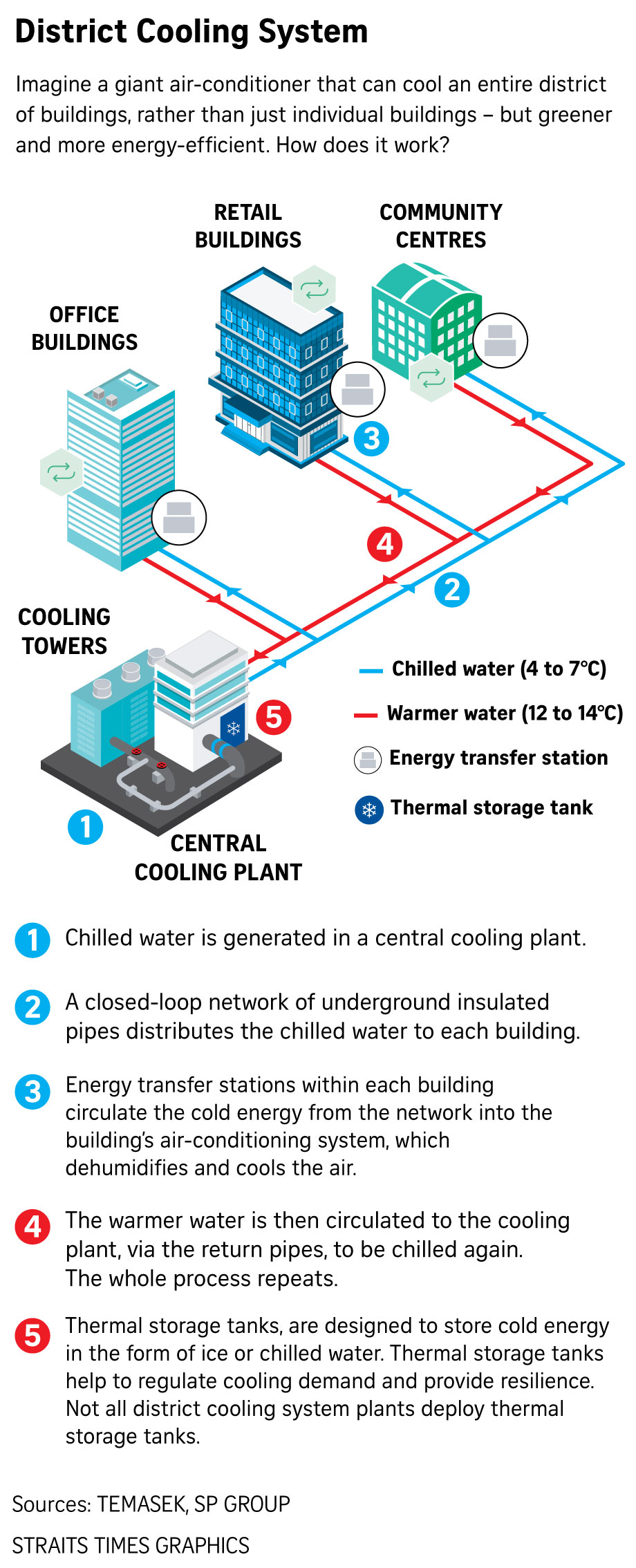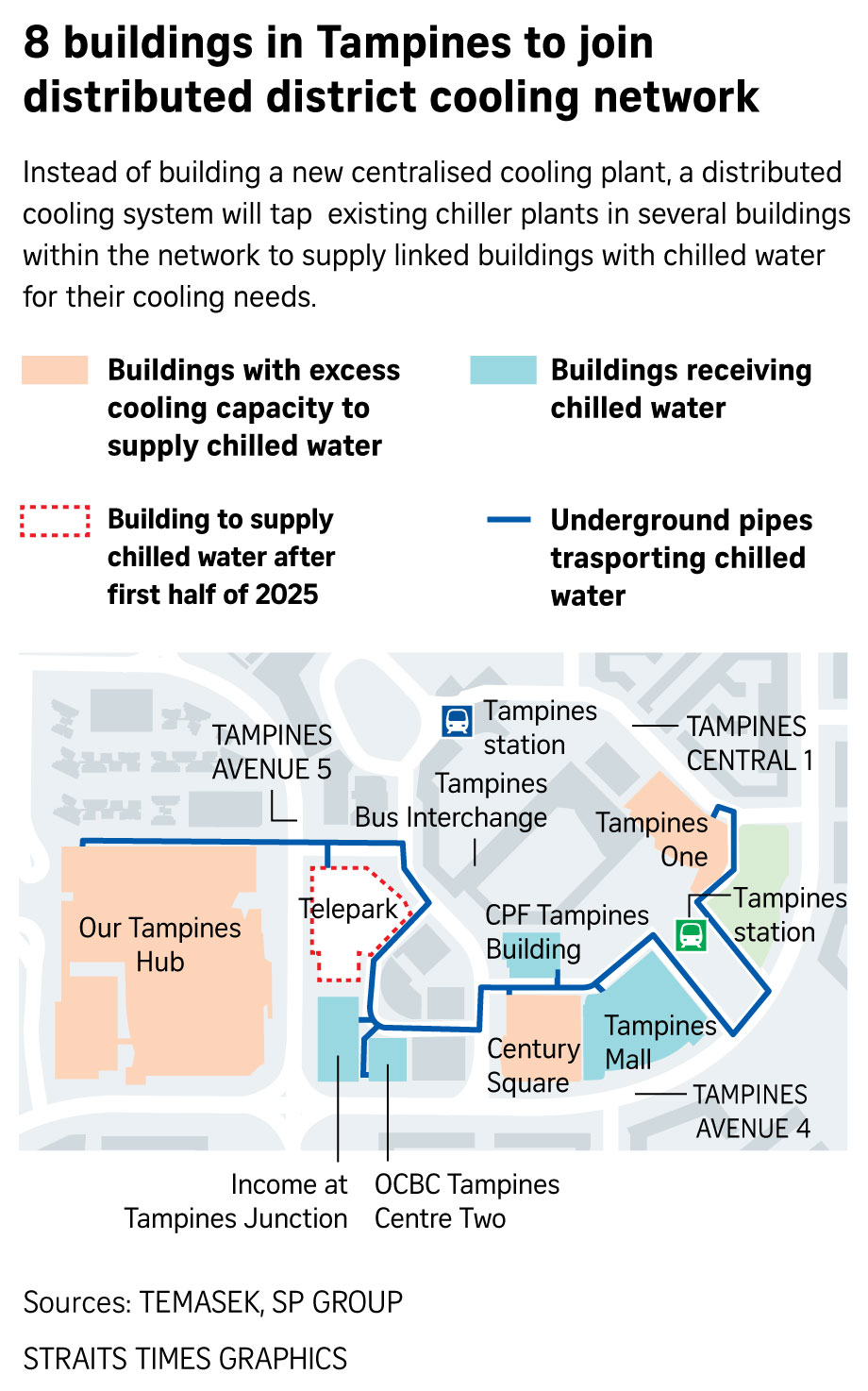Work to retrofit Tampines town centre with district cooling network to begin
Work to retrofit Tampines town centre with district cooling network to begin
Written by Ang Qing
SINGAPORE – By the first half of 2025, Tampines will become Singapore’s first town centre to retrofit a centralised cooling system in a project that will slash the environmental cost of air-conditioning . It will also pave the way for more than 80 per cent of buildings here to follow suit.

Tampines Mall is one of the seven buildings to be connected in the centralised cooling network.
ST PHOTO: LIM YAOHUI
On Monday (April 18), owners of seven buildings in the town centre agreed to start work on SP Group’s first distributed district cooling network, with another slated to join in the future, said SP Group and Temasek in a statement.
District cooling technology involves generating chilled water in a centralised location, and then sending the chilled water through a network to multiple buildings. In conventional cooling systems, individual buildings have their own chillers.
District cooling is more energy-efficient as the system reaps the benefits of economies of scale by sharing chiller capacity.
Such technology is being implemented worldwide in countries such as Malaysia and Bahrain, as they seek to reduce carbon footprint.
While air-conditioning was hailed by late prime minister Lee Kuan Yew as Singapore’s secret to success in the tropics, its cool comfort comes at the price of up to half of a building’s energy consumption.
The shared infrastructure from Tampines’ future district cooling system is expected to help the town reduce carbon emissions by 1,359 tonnes annually, equivalent to removing 1,236 cars from the roads, said the statement.
The network will also achieve savings of more than 2,800,000 kilowatt-hour annually, which can power more than 905 three-room Housing Board households for a year, it added.
The buildings to be connected in the network are Century Square, CPF Tampines Building, Income At Tampines Junction, OCBC Tampines Centre 2, Our Tampines Hub, Tampines Mall and Tampines 1.
Because this system is being implemented on an existing site, chilled water pipes will be retrofitted and installed on the buildings’ own chiller plants. Some members of the network will share the cooling load to provide air-conditioning to other buildings in the network.
As the first town to pioneer such infrastructure, Tampines is expected to become a blueprint for other existing buildings, as the nation aims to lower carbon emissions to net zero by or around 2050 , the statement said.
Separately, Ascendas Reit affirmed its interest to subscribe to the cooling system for commercial building Telepark.
The brownfield project marks one of the efforts to transform Tampines into an ecotown in line with the Singapore Green Plan 2030 .
The township was selected for its ageing infrastructure and diverse portfolio of buildings, which allows it to benefit from economies of scale, said Mr S. Harsha, managing director of sustainable solutions at SP Group.
Building the novel network, which was announced to be feasible in August last year, is expected to cost between $40 million and $60 million, he added.

Residents in Tampines will get to enjoy more greenery with a new park slated to be built by 2022. PHOTO: TAMPINES TOWN COUNCIL
Out of 14 buildings considered for the pre-feasibility study, only eight have expressed intent to join it so far because some buildings with newer chillers did not find it commercially viable to integrate their systems, he said.
In the network, Century Square, Our Tampines Hub and Tampines 1 were selected as chilled water supply nodes based on their excess cooling capacity and superior energy efficiency.
These developments will supply chilled water through an underground pipe about 1.5km long to the remaining buildings in the network, doing away the need for their own chiller plants.

“Most of the work will take place outside of office hours,” said Mr Harsha, noting that construction will take place with minimal disruption to operations.
While Tampines’ distributed district cooling network has not been tested in a smaller setting, chief engineer of Singapore District Cooling Foo Yang Kwang is cautiously confident that the firm’s experience building the world’s largest underground district cooling system in Marina Bay will be able to pull the feat off.
“We have done it before, this modification work is no different from normal chiller plants doing their own retrofitting,” said chief engineer of the SP Group subsidiary.
Despite being pioneers to trial such a network, building owners participating in the project are confident that it will help promote sustainability.
Said Mr Lim Khiang Tong, group chief operating officer of OCBC Bank: “Climate change and its effects have made sustainability a fundamental business driver and an agenda for collective action.
“We are pleased to be partnering like-minded organisations such as SP Group and our neighbouring building owners on this initiative that seeks to reduce energy consumption and our carbon footprint.”
Given that a significant proportion of buildings today will continue to exist in 2050, the project is crucial in illustrating how sustainable solutions can be integrated to transform existing townships, said Minister for Social and Family Development Masagos Zulkifli, who witnessed the signing of the agreements.
The Tampines GRC MP added: “The energy and cost savings, as well as reduction in carbon emissions enjoyed by building owners prove that with the right solutions, doing good and doing well are not mutually exclusive and will address our challenge posed by climate change.”

What’s the difference between district cooling and conventional cooling?
District cooling
• Instead of having individual chiller plants in each building, chilled water is produced on a large scale in a central cooling plant and supplied to buildings.
• The district cooling system operates at maximum energy efficiency by selecting the most suitable mix of chillers and using thermal storage tanks to manage electricity demand during peak periods.
• Buildings that tap into this centralised system benefit from reduced equipment cost and energy savings, and free up leasable space while reducing their emissions.
Conventional cooling
• Most buildings have dedicated space for their on-site chiller plants and rooftop cooling towers.
• Building owners need to buy cooling equipment and incur operational and maintenance costs. They may also need to invest in more chillers than necessary as a buffer for potential increases in cooling needs.
• Since the cooling demand of a building fluctuates throughout the day, the chiller in one building is unlikely to operate at its optimal efficiency. On-site cooling equipment, chillers and cooling towers need to operate round the clock regardless of energy demand.
May 16 2022
CATEGORIES
FEATURED POST

Sustainability and Climate Change – A Global Approach
There are no posts!
| Mon | Tue | Wed | Thu | Fri | Sat | Sun |
|---|---|---|---|---|---|---|
|
28
|
29
|
30
|
1
|
2
|
3
|
4
|
|
5
|
6
|
7
|
8
|
9
|
10
|
11
|
|
12
|
13
|
14
|
15
|
16
|
17
|
18
|
|
19
|
20
|
21
|
22
|
23
|
24
|
25
|
|
26
|
27
|
28
|
29
|
30
|
31
|
1
|
